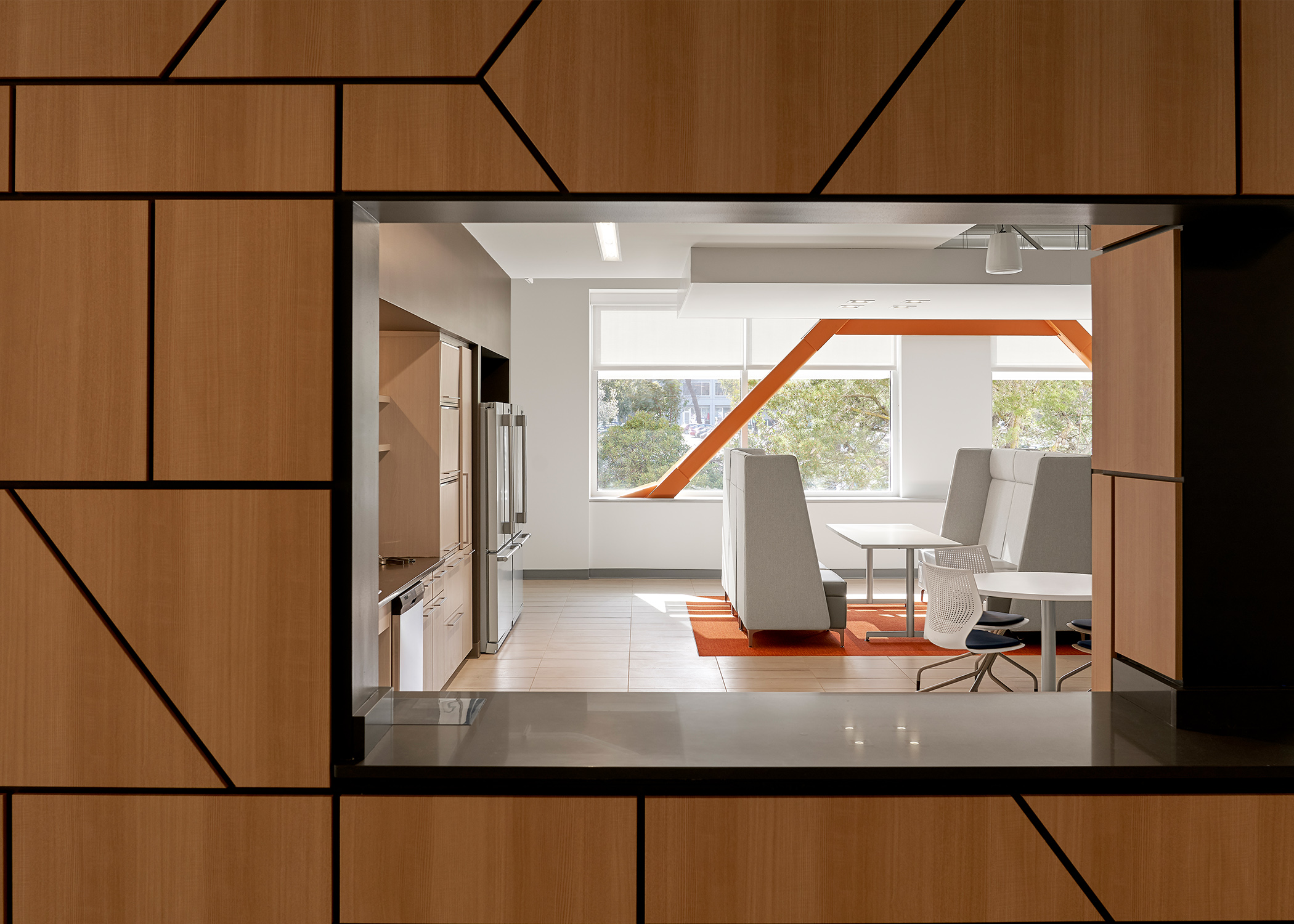Inclusivity in office design is not a temporary trend but an ongoing evolution. It’s a strategic necessity that aligns with steady cultural and demographic shifts towards diversity. By creating workspaces that cater to the needs of all your people—regardless of physical ability, age, gender, or cultural background—companies can enhance employee satisfaction and productivity, foster creativity and innovation, and reflect a commitment to a collaborative and welcoming culture.
The principles of inclusive office design can help your organization clarify the benefits thereof, drawing insights from leading experts and industry standards.
What is Inclusive Office Design?
Inclusive office design is about physical accessibility, but that’s really just the beginning. At its heart, inclusive design involves creating environments where every individual feels valued and supported, promoting a sense of belonging and empowerment. According to Dr. Greg Dooley from K2 Space, inclusive design is about “crafting spaces that anticipate and respect the varied ways in which people interact with their surroundings due to differences in ability, age, culture, and gender.” This holistic approach not only meets legal and ethical standards but also enriches the workplace experience for all employees.

The Economic Case for Inclusivity
From a business perspective, implementing inclusive office design has tangible benefits. McKinsey’s research indicates that companies ranking high in racial and ethnic diversity are 35% more likely to outperform their competitors financially, while those excelling in gender diversity have a 15% better performance rate. Furthermore, a Glassdoor survey revealed that 76% of job seekers consider a diverse workforce crucial when evaluating job offers, with even higher percentages among underrepresented groups. Inclusive design not only attracts a broader talent pool but also fosters an environment conducive to creativity and innovation.
Some Practical Building Blocks of Inclusive Design Include:
- Ergonomic Workspace Design: Prioritizing human health, comfort, and performance efficiency, ergonomic designs include adjustable and ergonomic furniture to cater to diverse body sizes and physical conditions.
- Accessible Technology and Equipment: Tools such as screen readers, speech-to-text software, and adjustable workstations ensure equal access to work tools for employees with disabilities.
- Sensory-Inclusive Spaces: Addressing sensory sensitivities involves creating quiet zones, using non-toxic materials, and providing adjustable lighting to accommodate various sensory needs.
- Wayfinding and Signage: Clear, understandable signage using large fonts, high contrast colors, Braille, and intuitive symbols help everyone navigate the workplace easily.
Designing for Physical Accessibility
Wide pathways, adjustable desks, and accessible entrances are fundamental to creating inclusive office spaces. These features accommodate individuals with mobility challenges, promoting independence and interaction. Innovative solutions like voice-activated systems further enhance the work environment for individuals with mobility issues.
Our work: NewGround Prioritized Accessibility at Neches Federal Credit Union Headquarters.
Technology plays a pivotal role in advancing inclusivity. Assistive technologies, such as screen readers and speech recognition software, significantly improve the work experience for individuals with disabilities. Adjustable workstations and communication tools like video conferencing ensure that all team members can participate fully, regardless of location or mobility.
Supporting neurodiverse employees involves creating quiet areas, providing flexible workstations, and ensuring clear signage. These measures accommodate diverse cognitive styles and needs, fostering a more inclusive and supportive environment. By recognizing and accommodating neurodiversity, employers can enhance individual well-being and contribute to a richer organizational culture.

The Leading Edge of Inclusive Design
The future of inclusive design in the workplace is not just a trend but a transformative approach that addresses the diverse needs of all employees. Embracing inclusivity in office design fosters an environment where every individual feels valued and supported, enhancing overall well-being, productivity, and job satisfaction. This forward-thinking strategy aligns with broader societal shifts towards diversity and inclusion, positioning organizations as leaders in creating equitable and welcoming workplaces.
As workplace design continues to evolve, the principles of inclusivity will increasingly become the norm. The focus will be on creating adaptable, flexible, and supportive environments that enhance the user experience for everyone. This ongoing process of learning, adaptation, and innovation promises a more equitable and productive future for all workers, ultimately benefiting both individuals and organizations.
Trust NewGround’s design expertise to bring your inclusive vision to life. Whether you’re embarking on a new building project or a design refresh of an existing space, our team is equipped with the knowledge and experience to create workplaces that meet the diverse needs of your employees. Contact NewGround today to learn how we can help you design a more inclusive, innovative, and supportive office environment that drives success for everyone.